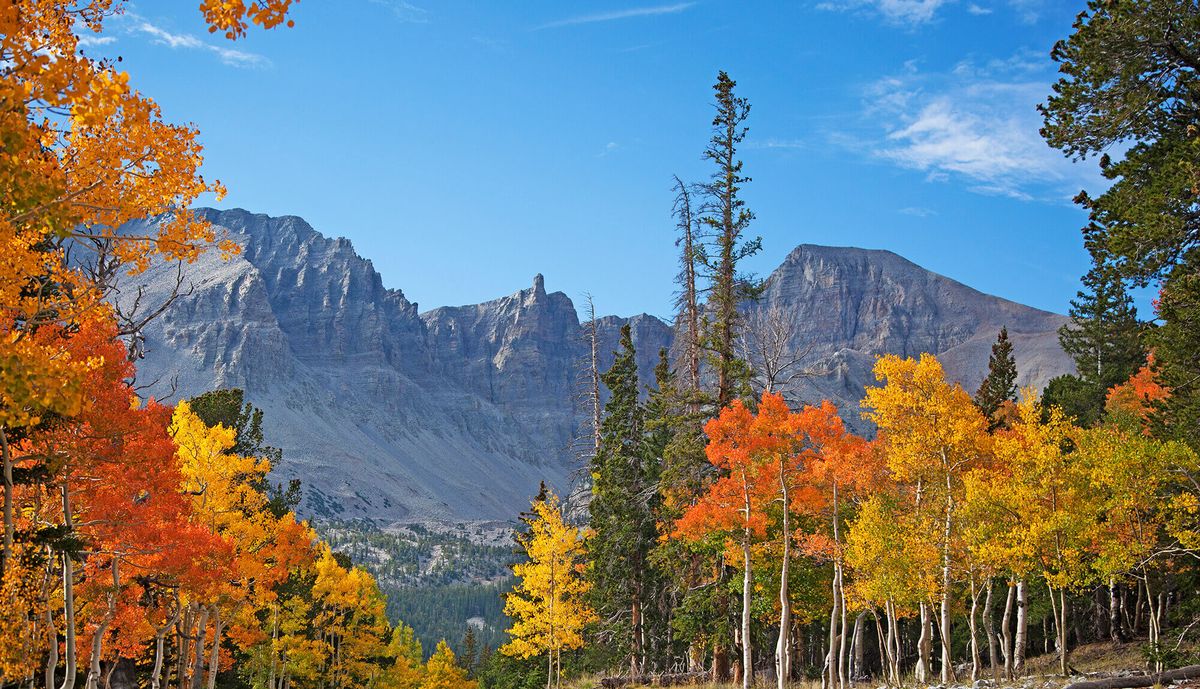Secrets Of Coyote Territories In Nevada’s Great Basin

Have you ever wondered where coyotes roam in Nevada's Great Basin? This vast desert landscape is home to these clever creatures. Coyotes thrive in the Great Basin due to its diverse habitats, from sagebrush plains to rugged mountains. They are highly adaptable, making use of both natural and human-altered environments. Understanding their territories can help you appreciate the balance of nature in this unique region. Whether you're a wildlife enthusiast or just curious, learning about coyote territories offers a glimpse into the wild heart of Nevada. Ready to explore the secrets of these fascinating animals? Let's dive in!
Secrets of Coyote Territories in Nevada's Great Basin
The Great Basin in Nevada is a vast, rugged landscape filled with hidden gems. Coyotes roam freely here, and their territories offer some of the most breathtaking views and unique experiences. Let's dive into the secrets of these wild lands.
1. Ruby Mountains
Known as the "Swiss Alps of Nevada," the Ruby Mountains are a haven for wildlife, including coyotes. The range offers stunning vistas, alpine lakes, and lush meadows.
- Lamoille Canyon: A glacier-carved canyon with dramatic cliffs and cascading waterfalls.
- Liberty Lake: A serene alpine lake perfect for a quiet afternoon.
- Ruby Crest Trail: A challenging hike with panoramic views of the entire range.
2. Black Rock Desert
Famous for hosting the annual Burning Man festival, the Black Rock Desert is also a prime coyote habitat. The vast, flat expanse offers a unique landscape unlike any other.
- Fly Geyser: A colorful, otherworldly geothermal geyser.
- Guru Road: An art installation road filled with quirky sculptures and messages.
- High Rock Canyon: A remote canyon with ancient petroglyphs and rugged beauty.
3. Great Basin National Park
This park is a hidden gem with ancient bristlecone pines, limestone caves, and star-filled skies. Coyotes can often be spotted in the park's diverse habitats.
- Lehman Caves: Explore stunning limestone formations underground.
- Wheeler Peak: The second highest peak in Nevada, offering breathtaking views.
- Bristlecone Pine Trail: Walk among some of the oldest living trees on Earth.
4. Pyramid Lake
Located within the Pyramid Lake Paiute Tribe Reservation, this lake is a sacred site with a rich history. Coyotes are often seen around its shores.
- Stone Mother: A natural rock formation with a fascinating legend.
- Anaho Island: A bird sanctuary home to pelicans and other waterfowl.
- Fishing: Known for its Lahontan cutthroat trout, a favorite among anglers.
5. Red Rock Canyon
Just a short drive from Las Vegas, Red Rock Canyon offers a striking contrast to the city's bright lights. Coyotes thrive in this rugged, red-hued landscape.
- Calico Tanks Trail: A moderate hike with stunning views and hidden water tanks.
- Ice Box Canyon: A cool, shaded canyon perfect for escaping the desert heat.
- Scenic Drive: A 13-mile loop with numerous viewpoints and trailheads.
6. Valley of Fire State Park
Nevada's oldest state park, Valley of Fire, is named for its fiery red sandstone formations. Coyotes are often seen wandering through this vibrant landscape.
- Fire Wave: A stunning rock formation with swirling red and white stripes.
- Atlatl Rock: Features ancient petroglyphs that tell stories of early inhabitants.
- Elephant Rock: A natural rock formation resembling an elephant.
7. Humboldt-Toiyabe National Forest
This expansive forest covers much of Nevada and offers diverse ecosystems where coyotes roam freely. From high desert to alpine meadows, there's something for everyone.
- Mount Charleston: A popular spot for hiking and skiing near Las Vegas.
- Lamoille Canyon Scenic Byway: A beautiful drive through the heart of the Ruby Mountains.
- Angel Lake: A picturesque lake perfect for camping and fishing.
8. Desert National Wildlife Refuge
The largest wildlife refuge in the lower 48 states, this area is a sanctuary for many species, including coyotes. The refuge offers a glimpse into Nevada's wild heart.
- Corn Creek: The main visitor center with trails and wildlife viewing.
- Alamo Road: A scenic drive through diverse desert landscapes.
- Hidden Forest Trail: A challenging hike leading to a historic cabin.
9. Walker Lake
A remnant of ancient Lake Lahontan, Walker Lake is a serene spot with a rich ecosystem. Coyotes are often seen along its shores.
- Fishing: Known for its Lahontan cutthroat trout.
- Hawthorne Ordnance Museum: Learn about the area's military history.
- Walker Lake State Recreation Area: Offers camping, boating, and picnicking.
10. Ash Meadows National Wildlife Refuge
A unique desert oasis, Ash Meadows is home to rare plants and animals. Coyotes thrive in this lush environment.
- Crystal Reservoir: A clear, spring-fed lake perfect for birdwatching.
- Point of Rocks: A historic site with ancient petroglyphs.
- Devils Hole: A mysterious water-filled cavern home to the endangered Devils Hole pupfish.
Understanding Coyote Territories in Nevada's Great Basin
Coyotes are fascinating creatures with complex social structures and territories. Nevada's Great Basin offers a unique environment where these animals thrive. Knowing their behavior helps us appreciate their role in the ecosystem. Coyotes mark their territories with scent, vocalizations, and physical markers. They adapt well to different environments, making them resilient and resourceful.
Exploring the Great Basin reveals how coyotes interact with their surroundings. Their territories can range from a few square miles to much larger areas, depending on food availability and population density. Observing these animals in their natural habitat provides valuable insights into their lives.
Next time you visit Nevada's Great Basin, keep an eye out for signs of coyote activity. Understanding their territories adds depth to your experience and highlights the importance of preserving their natural habitats. Coyotes are more than just wild animals; they are integral to the balance of nature in this unique region.

